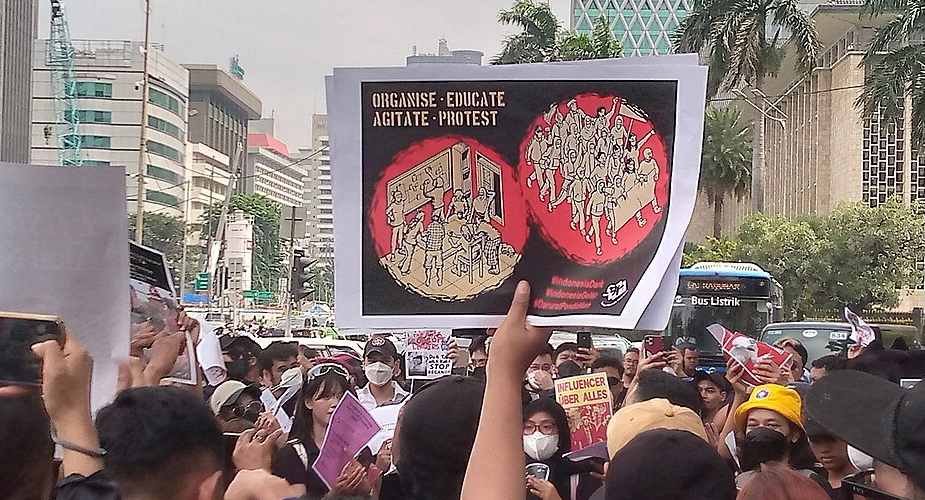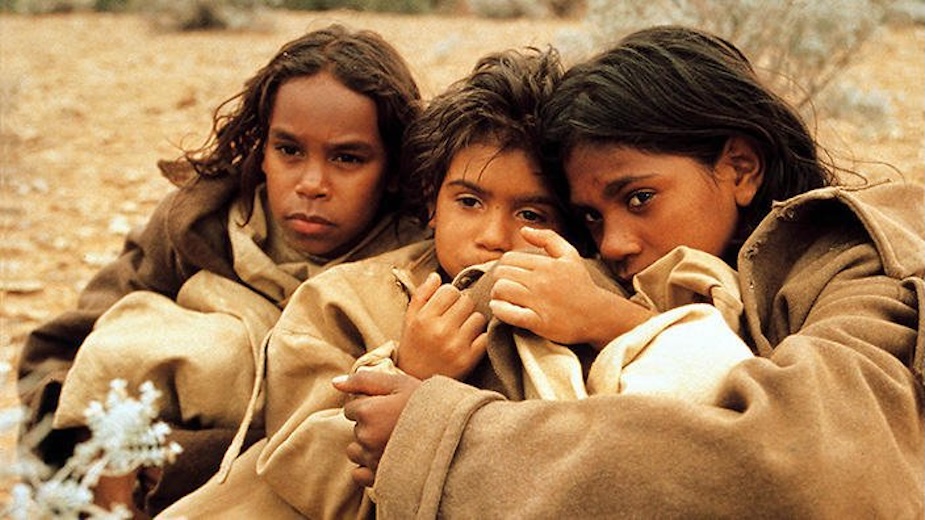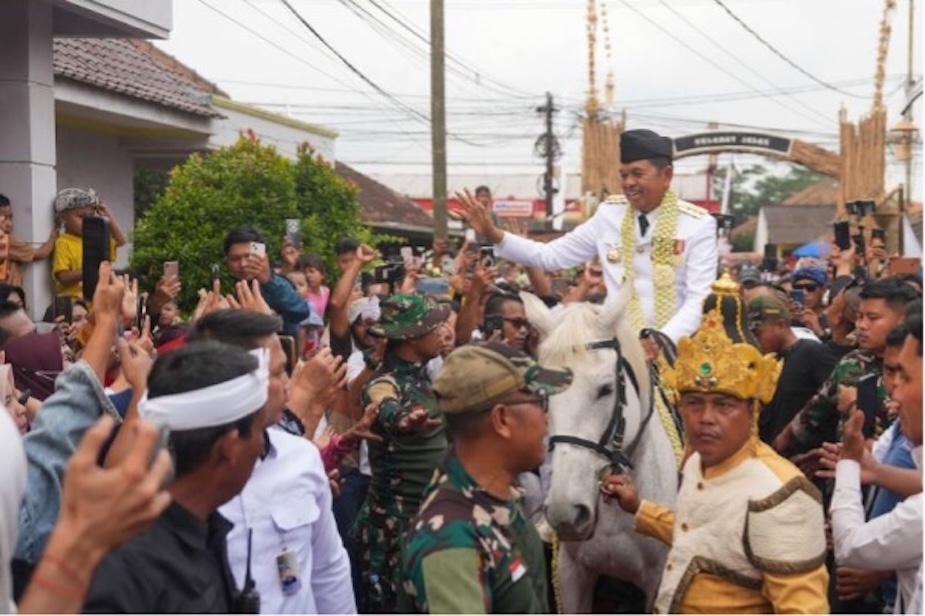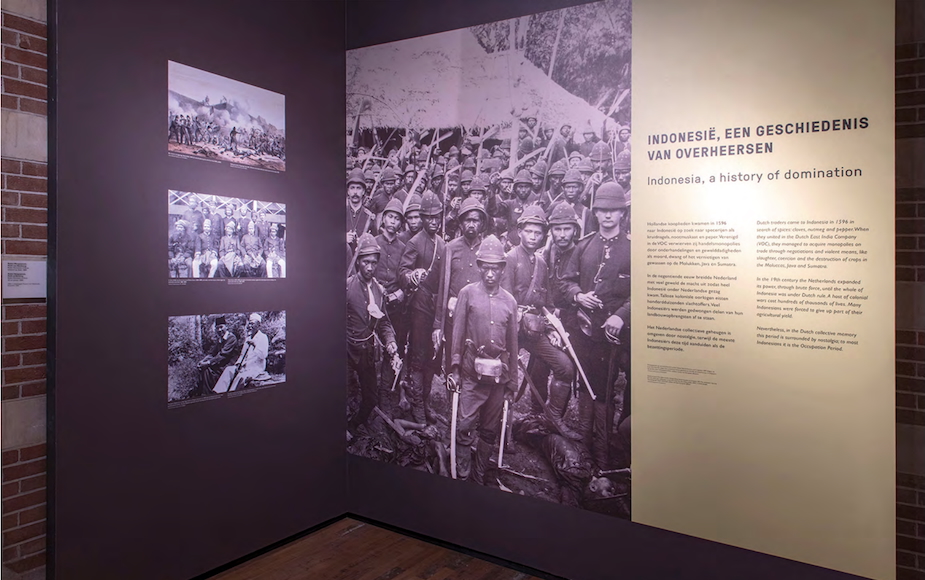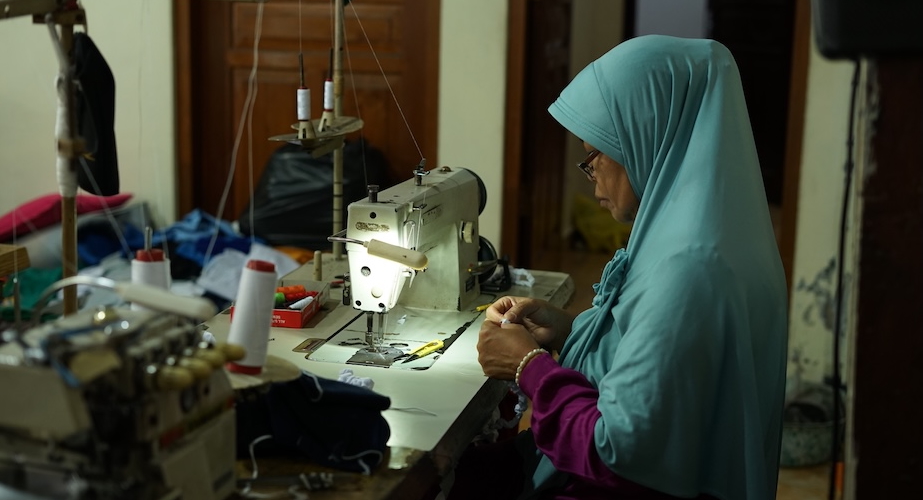As Ambon's conflict spreads, fear breeds hatred of 'others' in the beautiful and remote Banda Islands
Phillip Winn
Burned-out houses with slogans on their walls: 'anti-Jesus', 'this house eats pork'. There had been little hint that such animosities existed in the Banda Islands. Only 18 months before I had spent nearly two years researching aspects of local identity in a Muslim community.
The Banda archipelago is a group of eleven small islands in Central Maluku, six to seven hours from the provincial capital Ambon by the fastest passenger ship. The huge province of Maluku consists of islands scattered between Sulawesi and Irian.
Clashes between Christian and Muslim neighbours occurred over the evening of 19-20 April. As elsewhere in Maluku, it related to events in Ambon, where unprecedented inter-communal violence has continued since 19 January 1999. As I write at the end of July, renewed unrest in the Poka and Galala areas just outside Ambon city adds more casualties and property damage to the toll.
The initial episode in Ambon began with an argument between a mini-bus driver and his passenger. It led to a conflict between their respective settlements Batu Merah (largely Christian) and Mardika (Muslim). This was not in itself exceptional, but the conflict spread quickly, initially between groups of Muslim migrants from southern Sulawesi and Christian Ambonese, then embracing Islamic and Christian communities of all kinds throughout Ambon, and throughout the province. Reports of 'ethnic clashes' rapidly changed to 'religious violence' as indigenous Muslims and indigenous Christians, once belonging to single communities, fought it out.
News quickly reached Banda. Local Muslims heard while calling relatives in Ambon to celebrate Lebaran, the end of the fasting month. Within a month, a formal 'peace accord' was signed between Muslim and Christian leaders in Banda Neira, district capital of the Banda Islands. But three months later conflict broke out here too, quite late when compared to the rapid spread in other areas. I want to focus on a single community, Lonthoir on the island of Banda Besar, to illustrate what happened.
The timing of the first clash, during the busiest of Islamic holy days, was sufficient to convince Lonthoir residents that Muslims were the victims. Prayer sessions for Ambon-based relatives were organised at the Lonthoir mosque two nights each week. They continue to the present day. In the week following Lebaran, refugees from Ambon began to arrive in the Bandas, carrying with them stories, fears and rumours. Mosque attendance in Lonthoir rose sharply and remains high.
One persistent story suggested that boats carrying armed Christians were landing on deserted beaches near Muslim communities in order to launch surprise attacks. Lonthoir men organised night patrols as a result, guarding remote sections of coastline in order to raise the alarm. While this story declined after the first month, Lonthoir people still speak of secret plans to 'Christianise' Maluku.
Fear as much as anger seems to have been the initial response to the events in Ambon. People said they woke at any sound. A rumour predicted three days of 'darkness' (linked to the recent lunar eclipse?). Numerous kerosene lanterns were purchased in anticipation.
These fears are difficult to explain. In Ambon, the historical advantages of the Christian population have eroded. Christians have migrated out, Muslims, mostly from southern Sulawesi (Bugis, Makassar, Buton) have migrated in. From a large majority, Ambonese Christians are now around half the population. In the Banda Islands, similar changes had rather increased an existing Muslim majority. Nonetheless, even before the Ambon conflict, Banda's Muslims sometimes expressed the vulnerable sense of being an Islamic outpost in a Christian area. They feared 'outsiders' would act violently against them.
Refugees
In the months leading up to the outbreak of violence in Banda, 3-4,000 refugees arrived, increasing the population of the islands by almost a third. Seven hundred settled in Lonthoir where the population was originally only 3,000. While the Bandas are more than 90 percent Muslim, the Christian minority forms a higher proportion of the population on the islands of Hatta and Ai, and in the administrative centre of Neira. Almost all the small number of Christian refugees settled in Hatta and Neira. Unlike Ai, the Christian population of Hatta has for some years sought marriage partners outside the Banda Islands, from areas now centrally involved in the events in Ambon in particular Saparua. Movement between Saparua and Hatta had been regular. It was here the Banda conflict would begin.
Christians in the Bandas have historically participated alongside Muslims in traditional rituals, despite the fact these ceremonies incorporate aspects of Islamic practice. This was less the case on Hatta, where the two population segments had become distinct, partly as a result of links to outside areas and also concerns with issues of orthodoxy within the Protestant Church of Maluku (GPM). Sporadic instances of stone throwing began to occur at night on Hatta. In Neira, despite the presence of a newly arrived contingent of riot police (Brimob), unidentified assailants killed a local Christian at night.
In Lonthoir, a small Christian settlement of immigrants from Southeast Maluku (present since the 1960s) sold their belongings and gardens and returned to that area. It appears they felt forced to relocate. A Christian teacher, also originally from elsewhere but living in Lonthoir for over twenty years, became a target of suspicion when he visited Christian friends on another island. His house was stoned on a several nights and he left the islands shortly after. Many Christians chose to leave Neira.
On the afternoon of April 19, a stone throwing incident on Hatta became open conflict, with a Muslim man killed and Christian houses destroyed by fire. As police reinforcements rushed to Hatta Island by speedboat, the small contingent left on Neira could not prevent a mob from attacking Christian houses as the news spread. Some were already empty, but numerous Christians were forced to shelter at a local hotel (owned by a Muslim), or with Muslim neighbours. Lonthoir people heard the news of Hatta at the same time as fire and smoke became visible in nearby Neira. It seemed the conflict they had feared was beginning.
While older men tried to stop them, a group of youths rushed to the coast to find transport to Neira Island. Some went to the nearby settlement of Waling, where a Christian family of mixed local and Dutch descent had already been attacked and five family members killed. The family's colonial-era plantation buildings were ablaze. Twenty-four men now await trial for these deaths. The Lonthoir men managed to find transport to Neira at Waling, while the remaining group back in Lonthoir destroyed a colonial-era church, originally built with the help of local Muslims. The empty homes of departed Southeast Malukan residents were also burned by Muslims living nearby.
At this point no Christians remained in Lonthoir or on Banda Besar Island as a whole. Two days later the navy arrived to evacuate the entire Christian population of the Banda Islands, with the exception of 15 or so households on Ai who refused to leave and remain there today.
Fragile
In mid-July, I returned by passenger ship to the community of Lonthoir where I had lived. Refugees fleeing conflict had used this same form of transport. A number were now returning. A large group of southern Sulawesi Muslims were travelling back to Ambon, carrying their belongings and trade goods (this was several days before the new conflict in Poka and Galala). At the port of Banda sixteen armed Brimob personnel, weapons in hand, spread across the dock as people disembarked.
My presence was taken as a reassuring sign tourists have been absent from the islands since the violence in Ambon began. Officers assured me that the Bandas were calm now, peaceful. Yet the Christians I had known were gone, their houses destroyed, or occupied by refugees who write 'Muslim House' or 'Refugee' prominently on the outside. The security forces have proved fragile instruments of authority where mass violence is directed not at the state but at other sections of local societies.
Many Lonthoir people view the events of that single night with a mixture of regret and defensiveness. They say their youths did not participate in the events in Neira, Hatta or elsewhere in Banda Besar. This means their 'hands are not dirty'. But at the same time their 'name is not respected' by other Muslim communities, because they did not demonstrate support. They often point at refugees as the main instigators, although evidence suggests this is not so, since only a few refugees are among those arrested.
How do we make sense of these events? This was a prominent concern at the International Maluku Research Conference, held at the Northern Territory University in Darwin from the 14-16 July 1999. One significant element may have been the erosion of traditional forms of authority. Reforms of village government during the 1970s shifted power away from local leaders (Muslim and Christian) to Jakarta, and bound provincial elites more closely to the central government. Local customary or 'adat' regulation continues to have an ambiguous relation to state administration. Both the state and local adat may be associated with discipline and control, rather than a viable vision of the future that might inspire the young. Both appear to be suffering a profoundly diminished legitimacy.
Phillip Winn is a PhD student in anthropology at the Australian National University. A detailed account of the Ambon violence is in Human Rights Watch Asia, 'The violence in Ambon', www.hrw.org/hrw/reports/1999/ambon/. Two non-government organisations doing useful non-sectarian humanitarian work are Tirus and Yayasan Baileo Maluku contact both at tabaos@ambon.wasantara.net.id.



